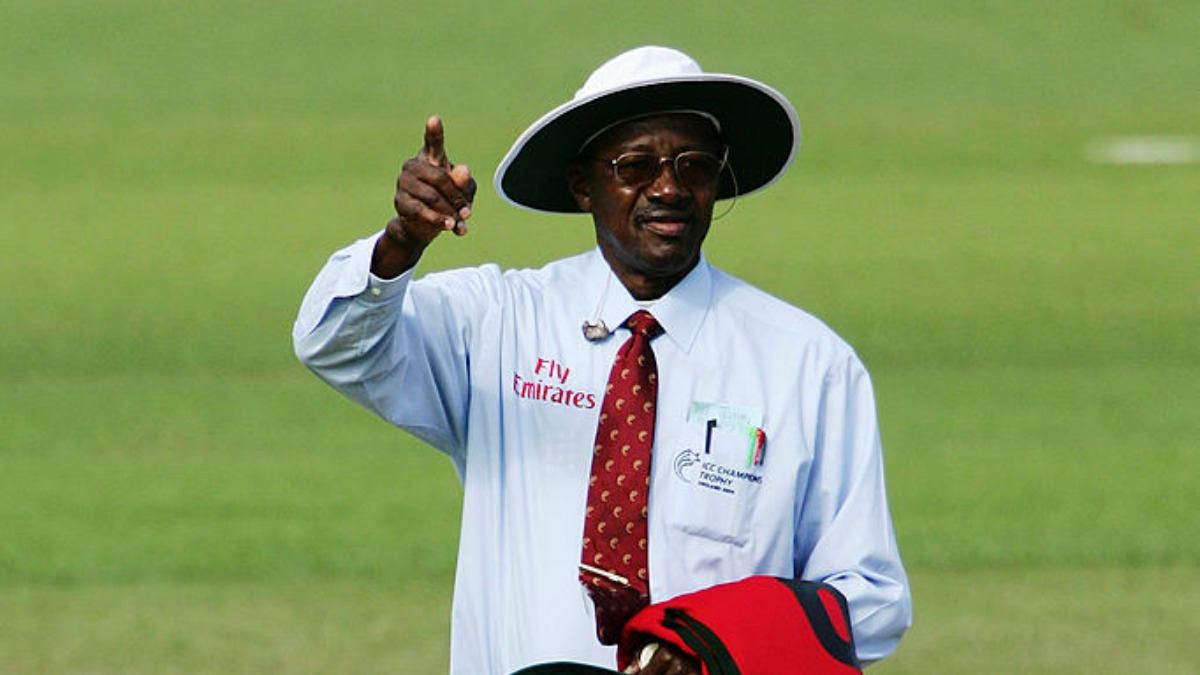Introduction

Cricket, often referred to as the “gentleman’s game,” is known for its complex rules and traditions. Among these, the signals made by cricket umpires play a crucial role in ensuring the smooth flow of the match. These signals convey important information to players, spectators, and fellow officials. In this blog, we’ll delve into the fascinating world of cricket umpire signals, decoding their meanings, and understanding their significance in the game.
The Role of the Umpire
In cricket, the umpire is akin to a referee in other sports. Umpires are responsible for making critical decisions during a match, such as judging whether a batsman is out or safe, confirming the legitimacy of deliveries, and ensuring fair play. To communicate these decisions effectively, umpires use a set of standardized signals, which have evolved over time.
Basic Umpire Signals

- Out: When a batsman is dismissed, the umpire raises their index finger, pointing it towards the sky. This is perhaps the most recognizable signal in cricket, indicating that a wicket has fallen.
- Not Out: Conversely, if the umpire believes the batsman is not out, they will stretch their arms out horizontally. This signal is particularly crucial when there’s a close call for run-outs or when a fielding side appeals for a dismissal.
- Bye: When the ball passes the batsman without making contact with the bat or any part of the batsman’s body, and runs are scored, the umpire raises an open palm to signal “bye.” The bowler concedes these runs, and the batsman doesn’t need to make contact.
- Leg Bye: If the ball hits the batsman’s body, excluding the hand, and runs are scored, the umpire touches their thigh to indicate “leg bye.” Similar to byes, these runs are extras, and they aren’t attributed to the batsman’s record.
-
Wide: When a bowler delivers a ball that is too wide for the batsman to play a shot, the umpire extends both arms sideways. This signifies a “wide” delivery, and an extra run is awarded to the batting side.
- No Ball: A no-ball is signaled when the bowler oversteps the crease during their delivery stride. The umpire stretches one arm horizontally, signaling a “no ball,” and the batting side receives an extra run.
- Free Hit: In limited-overs cricket, if a bowler delivers a no-ball, the next ball becomes a “free hit.” The umpire raises one hand above their head to signify this, allowing the batsman to play an unrestricted shot.
- Six: When a batsman hits the ball over the boundary without it touching the ground, the umpire raises both arms overhead to signal a six. This is the highest-scoring shot in cricket, contributing six runs to the batting side’s total.
- Four: If the ball reaches the boundary after being struck by the batsman, but without clearing it on the full, the umpire raises one arm to indicate a four, adding four runs to the batting team’s score.
- Change of Innings: When it’s time to switch from the first innings to the second innings or vice versa, the umpire signals by crossing their arms above their head.
- End of Play: At the conclusion of a day’s play or a match, the umpire removes the bails from the stumps, signifying the end of the game.
Role of the TV Umpire:
n modern cricket, there is often a third umpire, also known as the TV umpire, who uses technology to assist with decision-making. The on-field umpires can refer certain situations, like close run-outs, to the TV umpire, who reviews replays and communicates the decision.
DRS – Decision Review System
The Decision Review System (DRS) is an integral part of international cricket. It allows teams to challenge on-field decisions, particularly for dismissals. The TV umpire plays a crucial role in the DRS process, reviewing available camera angles to make accurate determinations.
Understanding the Umpire’s Signals
While the basic signals are essential for all cricket enthusiasts to comprehend, there are more specific and nuanced signals used in professional cricket. For example, the umpire may signal a “wide ball” or “leg bye” in various ways, ensuring clarity during the game.
Historical Significance
Cricket umpire signals have a rich history. They have evolved over the years to adapt to changes in the game’s rules and formats. These signals are designed to be clear, consistent, and universally understood by players, officials, and spectators, regardless of language or location.
Conclusion
Cricket umpire signals are a vital component of the game, ensuring that it is played fairly and within the rules. These signals enable players and fans to follow the action, providing transparency in decision-making. As cricket continues to evolve, the role of umpires and their signals will remain central to maintaining the integrity and spirit of the sport. Understanding these gestures adds another layer of enjoyment for cricket lovers worldwide.





